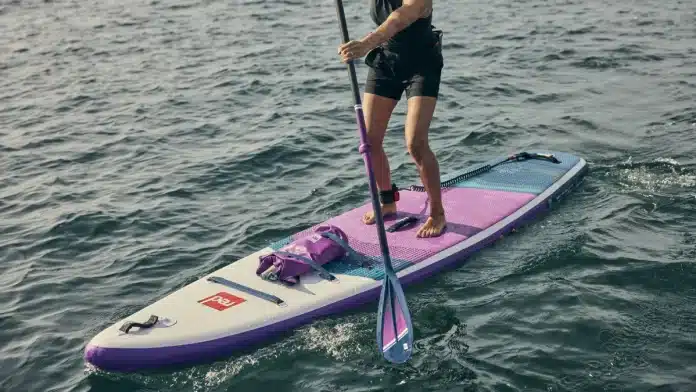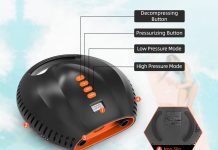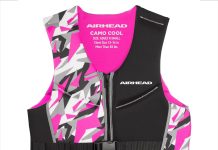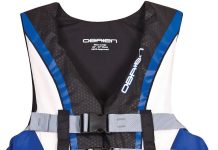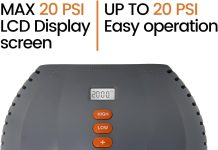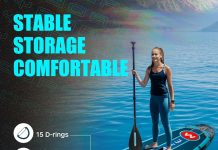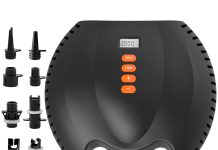Are you curious about which SUP paddle blade material is the toughest? Look no further! In this article, we’ll explore the durability of various blade materials, helping you make an informed decision regarding your stand-up paddleboarding adventures.
From fiberglass to carbon fiber, we’ll delve into the pros and cons of each material, uncovering the ultimate winner for the most resilient SUP paddle blade. So, grab your board and dive into paddle blade materials!
1. Introduction
Welcome to our comprehensive guide on SUP paddle blade materials and their durability. Regarding stand-up paddleboarding (SUP), the paddle blade is a crucial component that plays a significant role in your overall paddling experience. In this article, we will explore the different types of SUP paddle blade materials and discuss the durability of paddle blade material.
1.1 Definition of SUP Paddle Blade
Before diving into the details, let’s start with clearly defining a SUP paddle blade. The SUP paddle blade is the part of the paddle that comes into contact with the water, propelling you forward as you paddle. It is typically flat, rectangular, or teardrop-shaped, providing surface area for effective strokes and maneuverability.
1.2 Importance of Paddle Blade Material Durability
Durability is a crucial factor when choosing a SUP paddle blade material. As paddle blades constantly come into contact with the water, they are exposed to various elements and forces, affecting their longevity. A durable paddle blade material ensures a longer lifespan, reduces the need for frequent replacements, and offers a better return on investment.
2. Types of SUP Paddle Blade Materials
There are several materials commonly used in the construction of SUP paddle blades. Each material offers its own set of advantages and disadvantages. Let’s explore the most popular options:
2.1 Fiberglass
Fiberglass is a widely used material for SUP paddle blades. It is known for its excellent balance of strength and flexibility. Fiberglass blades are lightweight and durable, making them popular among paddlers. They offer a good combination of performance, durability, and affordability.
2.2 Carbon Fiber
Carbon fiber is a high-performance material often used in advanced SUP paddle blades. It is incredibly lightweight and has an excellent strength-to-weight ratio. Carbon fiber blades provide excellent power transfer and are known for their stiffness, giving paddlers a more efficient stroke. However, they tend to be more expensive than other materials.
2.3 Nylon
Nylon is a cost-effective material commonly used in entry-level SUP paddle blades. It is known for its durability and Resistance to impact. Nylon blades are affordable and suitable for recreational paddling. While they may not offer the same level of performance as fiberglass or carbon fiber, they are a practical choice for occasional paddlers or beginners.
2.4 Plastic
Plastic is another common material used in SUP paddle blades. Plastic blades are typically more affordable and durable compared to other materials. They are resistant to impact and can withstand rough handling. However, plastic blades may not provide the same level of performance or responsiveness as fiberglass or carbon fiber blades.
2.5 Aluminum
Aluminum blades are often found in adjustable SUP paddles. While not as common as fiberglass, carbon fiber, nylon, or plastic, aluminum blades offer decent durability and affordability. They are typically heavier than other materials, which may affect paddling efficiency and fatigue over long distances.
3. Factors Affecting Blade Material Durability
Several factors contribute to the overall durability of SUP paddle blade materials. Let’s take a closer look at these factors:
3.1 Impact Resistance
One of the critical factors affecting paddle blade material durability is its ability to withstand impacts. Paddle blades are susceptible to hitting rocks, underwater obstacles, or the paddle shaft during strokes. Materials with high impact resistance, such as fiberglass and plastic, are less likely to crack or break under these circumstances.
3.2 Flexibility
Flexibility is an essential consideration in paddle blade material durability. While blades need to be stiff for an efficient stroke, a certain degree of flexibility is required to absorb impacts and prevent breakage. Materials like fiberglass and carbon fiber offer a good balance of stiffness and flexibility.
3.3 Wear Resistance
As paddle blades repeatedly come into contact with the water, they are subject to wear and tear. Materials that resist wear, such as carbon fiber and fiberglass, are less likely to develop scratches or damage over time. Nylon and plastic blades may show signs of wear more quickly, but their durability can still be acceptable for recreational use.
3.4 UV Resistance
The sun’s ultraviolet (UV) rays can degrade paddle blade materials over time, causing them to become brittle or discolored. UV resistance is crucial for paddle blades frequently exposed to sunlight. Fiberglass and carbon fiber blades usually have a protective coating or layer that enhances UV resistance.
3.5 Weight
The weight of a paddle blade affects not only the overall weight of the paddle but also the strain it puts on your arms and shoulders during paddling. Heavier blades may cause fatigue more quickly, especially during longer paddling sessions. Lighter materials like carbon fiber and fiberglass allow a more effortless and enjoyable paddling experience.
4. Comparison of SUP Paddle Blade Materials
Now, let’s compare the durability of different SUP paddle blade materials to help you make an informed decision:
4.1 Durability of Fiberglass Blades
Fiberglass blades are known for their durability. They offer a good balance of strength, flexibility, and impact resistance. Fiberglass blades can withstand regular use and minor impacts without compromising their integrity. However, they may be more prone to showing wear and tear compared to carbon fiber blades.
4.2 Durability of Carbon Fiber Blades
Carbon fiber blades are highly durable due to their exceptional strength-to-weight ratio. They are designed to withstand heavy use and significant impacts with minimal damage. Carbon fiber blades are less likely to scratch or show wear signs than other materials. However, they can be more susceptible to cracking under extreme impacts.
4.3 Durability of Nylon Blades
Nylon blades are generally durable and resistant to impact. While they may not offer the same level of durability as fiberglass or carbon fiber, they are suitable for recreational or occasional paddling. Nylon blades can withstand regular use but may show signs of wear more quickly.
4.4 Durability of Plastic Blades
Plastic blades are known for their durability and impact resistance. They can withstand rough handling, collisions, and accidental impacts. Plastic blades are less susceptible to scratches and wear compared to other materials. However, their performance may not be par with fiberglass or carbon fiber blades.
4.5 Durability of Aluminum Blades
Aluminum blades, often found in adjustable paddles, offer decent durability. While they may not be as durable as fiberglass or carbon fiber blades, they can withstand regular use and minor impacts. However, the added weight of aluminum blades may result in more fatigue during extended paddling sessions.
5. Pros and Cons of Different Blade Materials
To provide a comprehensive overview, let’s discuss the pros and cons of each SUP paddle blade material:
5.1 Pros of Fiberglass Blades
- Excellent balance of strength and flexibility
- Good durability and impact resistance
- Lightweight for reduced fatigue during paddling
- Affordable compared to carbon fiber blades
5.2 Cons of Fiberglass Blades
- May show signs of wear and tear more quickly
- Not as lightweight and stiff as carbon fiber blades
5.3 Pros of Carbon Fiber Blades
- Exceptional strength-to-weight ratio for superior performance
- Highly durable and resistant to wear and scratches
- Provides efficient power transfer during paddle strokes
- Lightweight for enhanced paddling efficiency
5.4 Cons of Carbon Fiber Blades
- More expensive compared to other materials
- Can be susceptible to cracking under extreme impacts
5.5 Pros of Nylon Blades
- Cost-effective option for recreational or occasional paddling
- Durable and resistant to impact
- Suitable for beginners and entry-level paddlers
5.6 Cons of Nylon Blades
- May show signs of wear and tear more quickly
- Not as durable or high-performing as fiberglass or carbon fiber blades
5.7 Pros of Plastic Blades
- Affordable and widely available
- Highly durable and impact-resistant
- Can withstand rough handling and accidental impacts
5.8 Cons of Plastic Blades
- Performance may not be on par with fiberglass or carbon fiber blades
- Less responsive and may require more effort for efficient strokes
5.9 Pros of Aluminum Blades
- Decent durability and impact resistance
- Often found in adjustable paddles,
- Typically more affordable compared to other materials
5.10 Cons of Aluminum Blades
- Heavier compared to other materials, leading to more fatigue during paddling
- Not as durable or high-performing as fiberglass or carbon fiber blades
6. Conclusion
When choosing a SUP paddle blade, it is essential to consider the material’s durability. The durability of a paddle blade is influenced by factors such as impact resistance, flexibility, wear resistance, UV resistance, and weight.
Fiberglass and carbon fiber are commonly recognized as the most durable materials, offering a balance of strength, flexibility, and lightweight performance. Nylon, plastic, and aluminum blades provide varying durability and affordability, catering to different paddling needs and budgets.
Ultimately, the most durable SUP paddle blade material will depend on your preferences, paddling style, and budget. Consider your paddling needs, frequency of use, and desired performance to make an informed decision. Remember, a durable and reliable paddle blade material will enhance your paddling experience and provide you with hours of enjoyment on the water.

